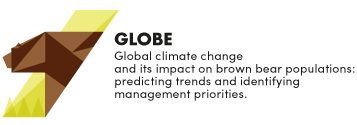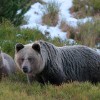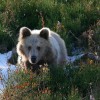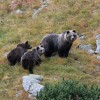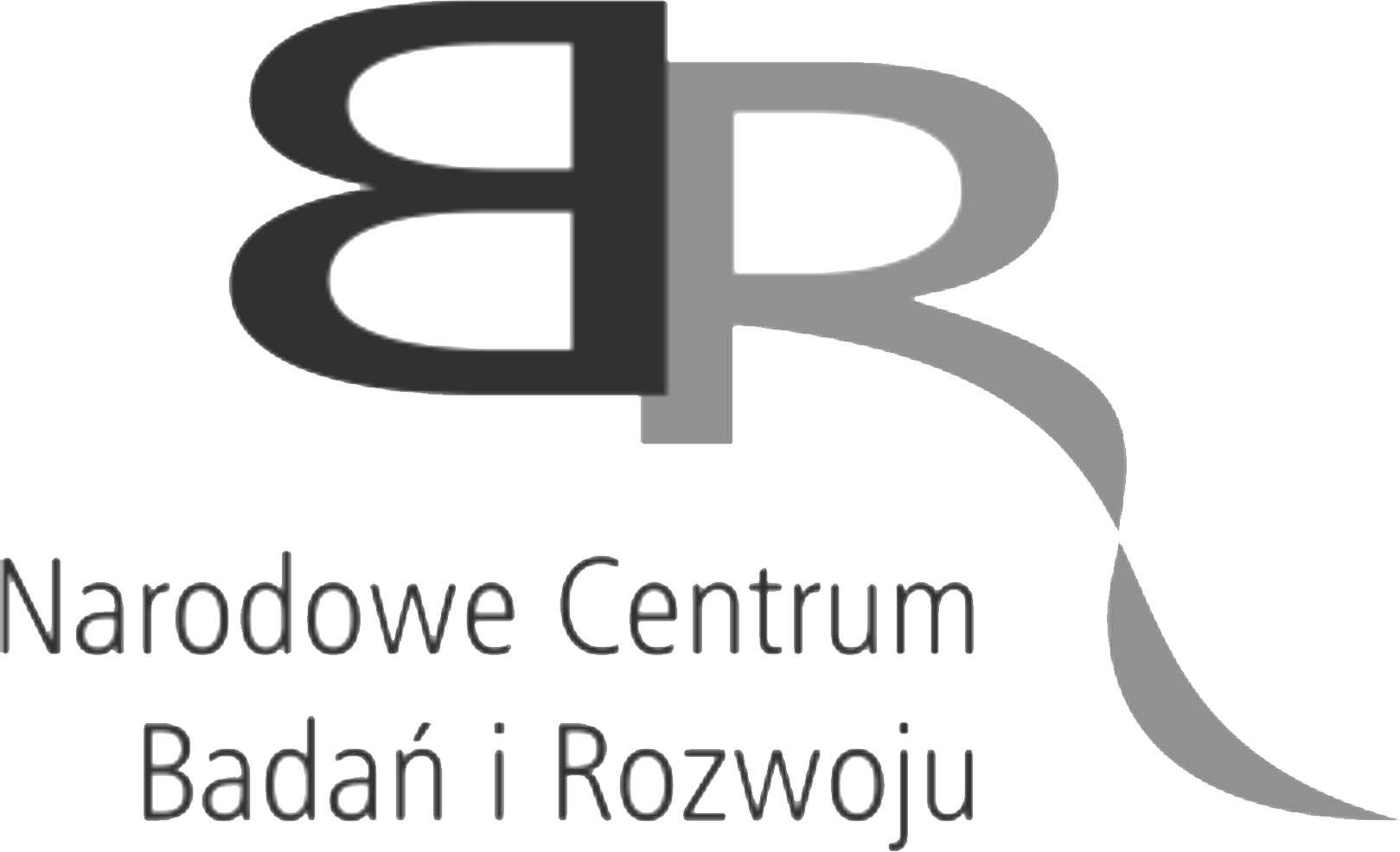 Iwo, the bear who last spring became famous for an extraordinary journey from the Tatra to Hungary and then through the Polish Bieszczady Mountains further into the Ukrainian Eastern Carpathians, happily survived the winter in the Gorgany range. His telemetry collar completed its two-year mission and automatically opened.
Iwo, the bear who last spring became famous for an extraordinary journey from the Tatra to Hungary and then through the Polish Bieszczady Mountains further into the Ukrainian Eastern Carpathians, happily survived the winter in the Gorgany range. His telemetry collar completed its two-year mission and automatically opened.
Iwo, now six-year old male bear, was captured and radio-collared in May 2014 in the Tatra National Park, Poland. Researchers from the Tatra National Park and the Institute of Nature Conservation in Krakow have been closely following and analysing the information sent by the GPS transmitter on Iwo’s collar about his locations and movements. The collar was programmed in such a way that after two years it would unfasten and drop-off from the animal.
From the information provided by Iwo’s GPS radio-collar we know that he is an experienced traveler. Two years ago, in spring 2014, scientists monitored his over 100-km journey in the area of Liptov in Slovakia. In the same year, he passed three times through the main ridge of the Tatra Mountains, in areas of 2200-2400 m high. He even climbed the walls of Kieżmarskiego Summit and Lomnica.
A year ago (late April 2015), Iwo embarked on another journey, which began in the area of Poprad. This time Iwo went 120 km to the south. On 3rd May he arrived to Hungary. After one week spent in this country, he turned north and on 11th May was already in Slovakia. Then changed direction to the north-eastern and began an amazing journey through Slovakia. One year ago, on May 19th, after nearly 190 km journey since he left Hungary, Iwo returned to Poland to Podkarpacie region, an area adjacent to Ukraine.
Iwo chose the Ukrainian Carpathians as a place for hibernation this winter. His collar was found in the Gorgany range by bear experts of the Tatra National Park, in the area where Iwo spent the last five months. Gorgany is a mountain range in the south-western part of Ukraine, considered one of the wildest mountains in Europe.
His GPS collar, which determined Iwo’s position every 30 minutes, allowed researchers from the Tatra National Park and the Institute of Nature Conservation to monitor his movements permanently under the project GLOBE. Since spring 2015, when Iwo reached the Hungarian border, Polish, Slovak, Ukrainian and Hungarian researchers and nature managers have regularly been in contact, exchanging information about the bear and supporting each other. The data collected during those two years are now downloaded from the collar and ready to be analyzed.
Thanks to the data collected by Iwo´s collar, we have learnt a lot about the ecology and behavior of wild Carpathian bears, as well as about their environment. We understand better the dispersal of subadult males in search of new home ranges. Although scientists have already feared that the eastern and western Carpathian brown bears subpopulations increasingly split up, Iwo’s trip shows that there is still connectivity between them. Most important, bears are still able to move through heavily fragmented areas of central Europe, using wildlife passages through the highways, forest corridors, and even small woods located in vicinity of heavily populated areas. By analysing the dispersal route of Iwo, we will better understand how animals move, what elements of the environment and space they use during dispersal. This will not only improve our knowledge, but also will be an important contribution for better spatial planning and infrastructure development in agreement with nature conservation. Iwo showed us that bears do not know and do not have borders, they cross several countries, forest districts, national parks. This highlights the need to verify the traditional methods of estimating bear numbers, where the same animals are probably counted several times, yielding higher numbers than in reality for a given country or region. Finally Iwo showed us how extremely important and necessary is the cooperation between scientists and nature managers at the national and international level. Iwo mobilized dozens of Polish, Slovakian, Ukrainian and Hungarian to cooperate closely, and made everybody aware of how close in fact we are. Because we share transboundary populations, we must work together and make cross-border decisions, if we want to effectively manage and protect wildlife and natural resources in the Carpathians.
We will not know where Iwo will go now, which countries or mountains he may visit. Will he reach Romania, from where he was just 48 km far? Or will he return to the Tatra Mountains one day, which is at 300-km distance from his last location in a straight line?
